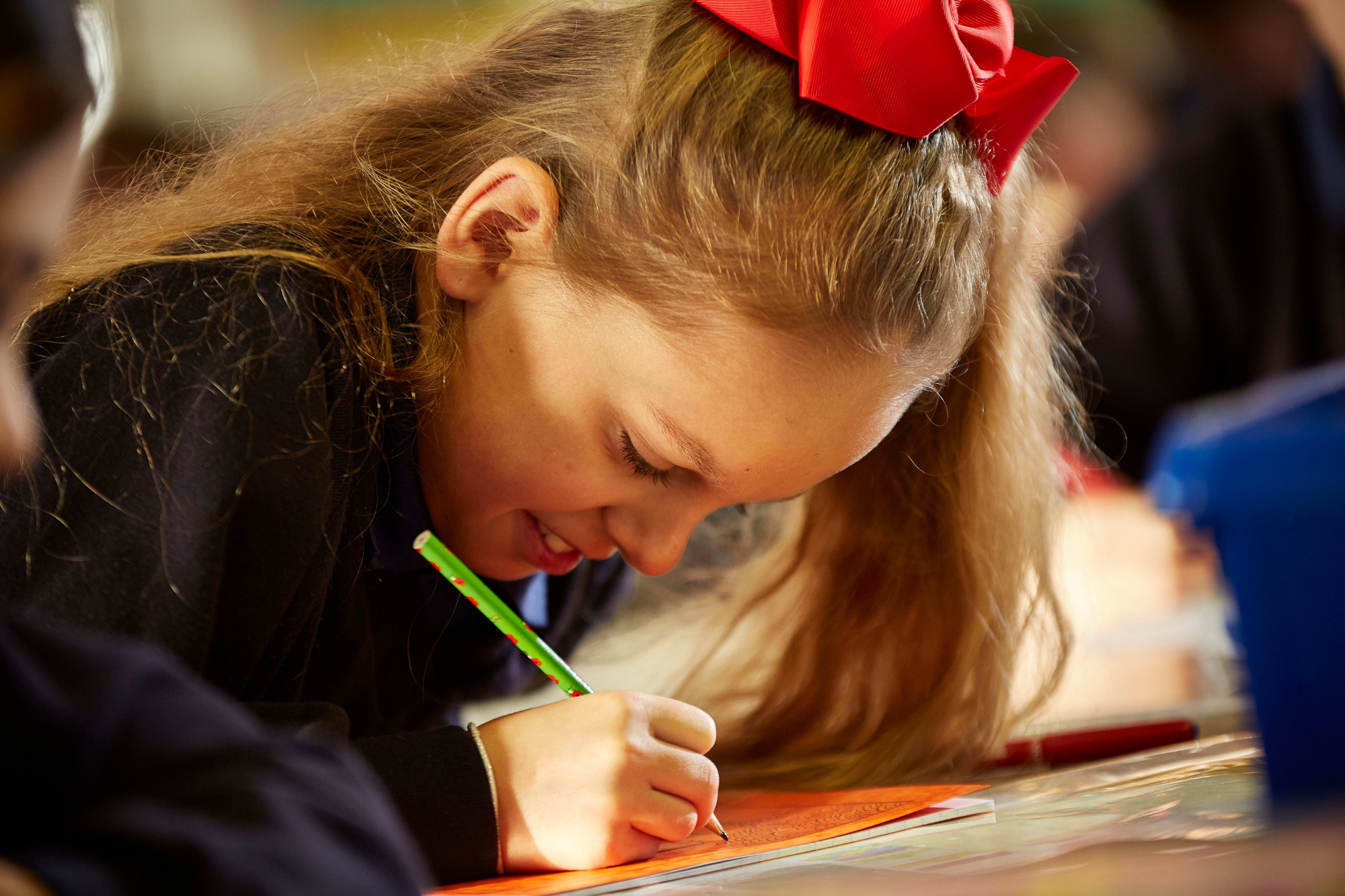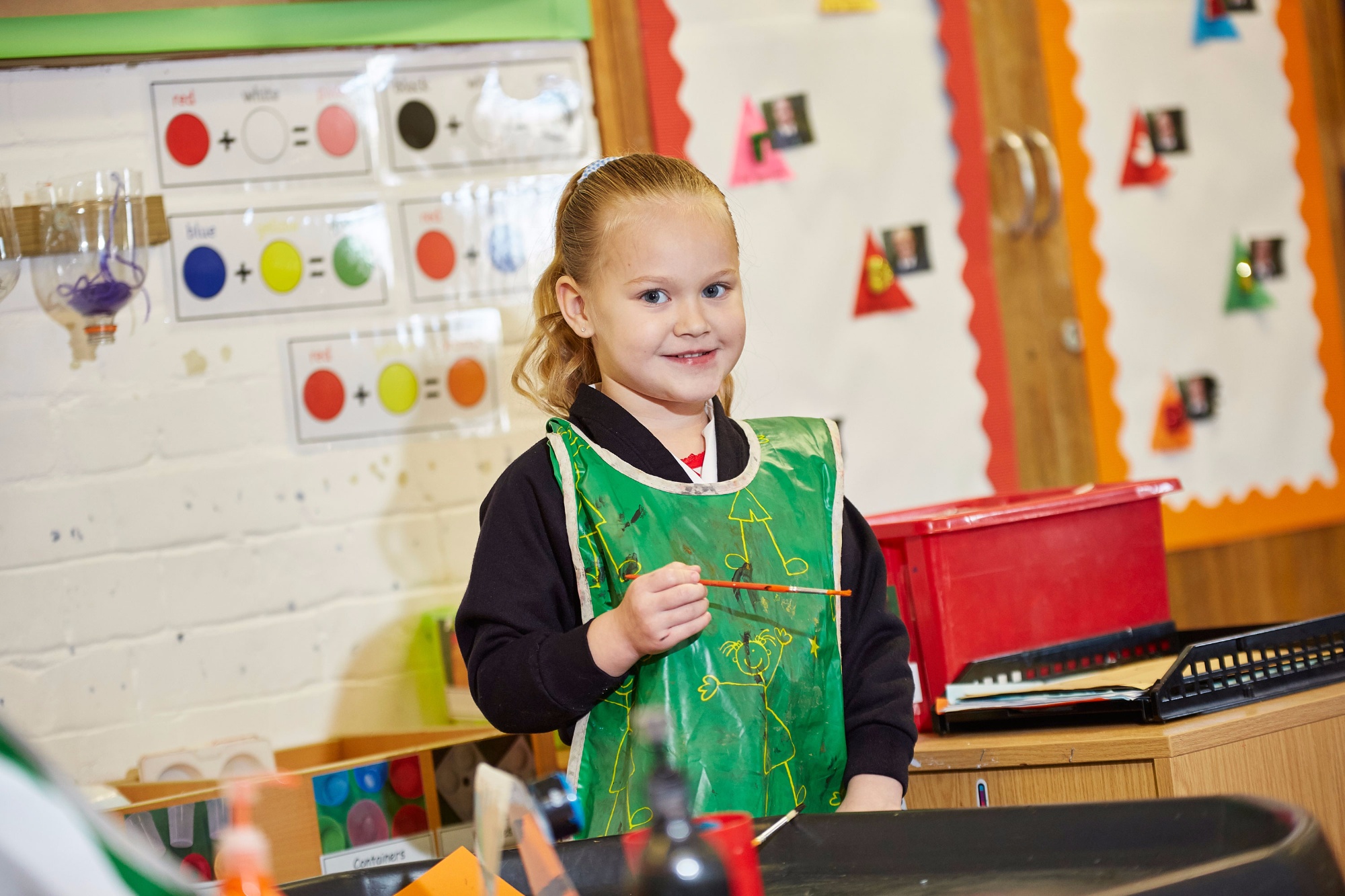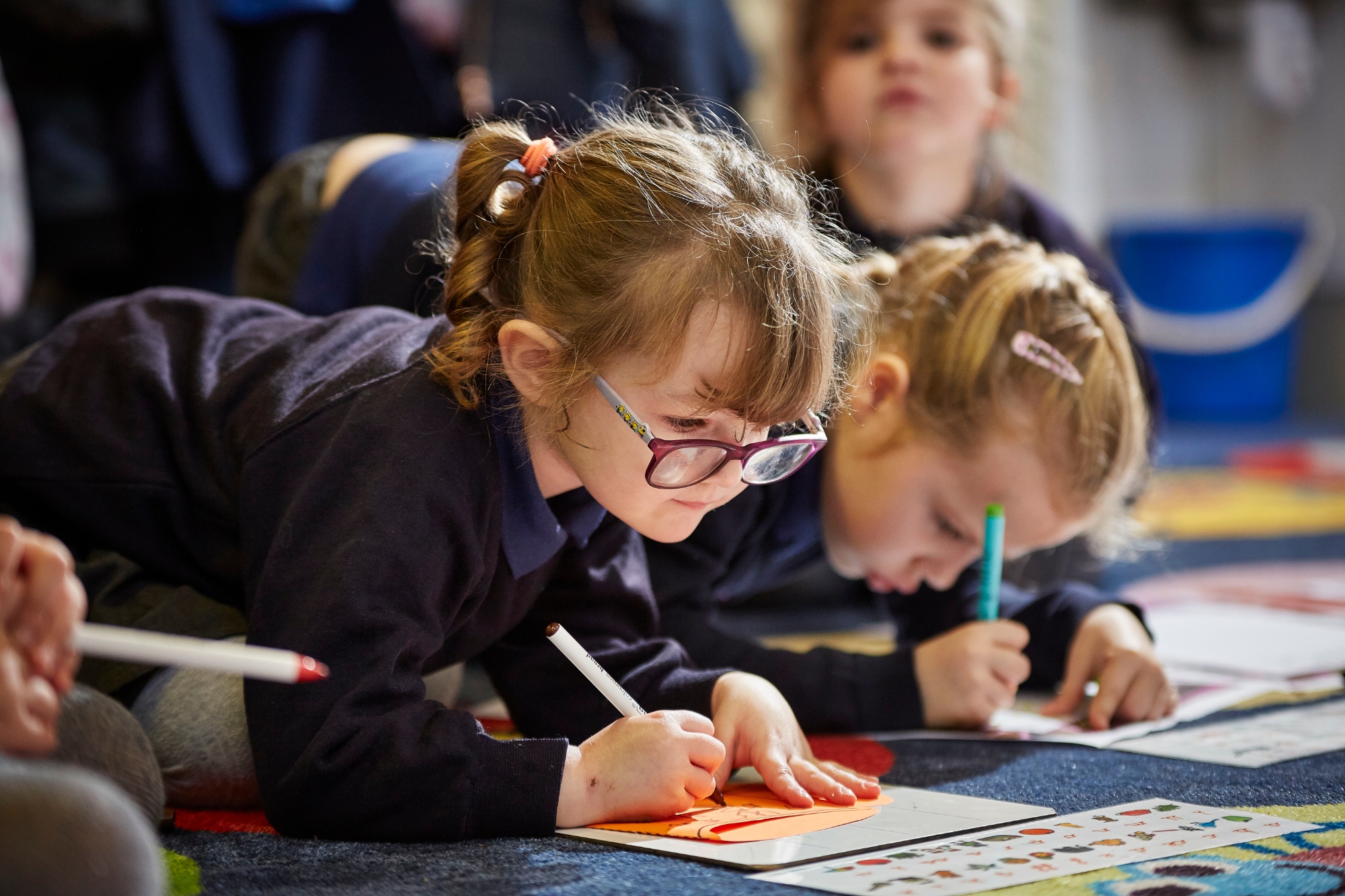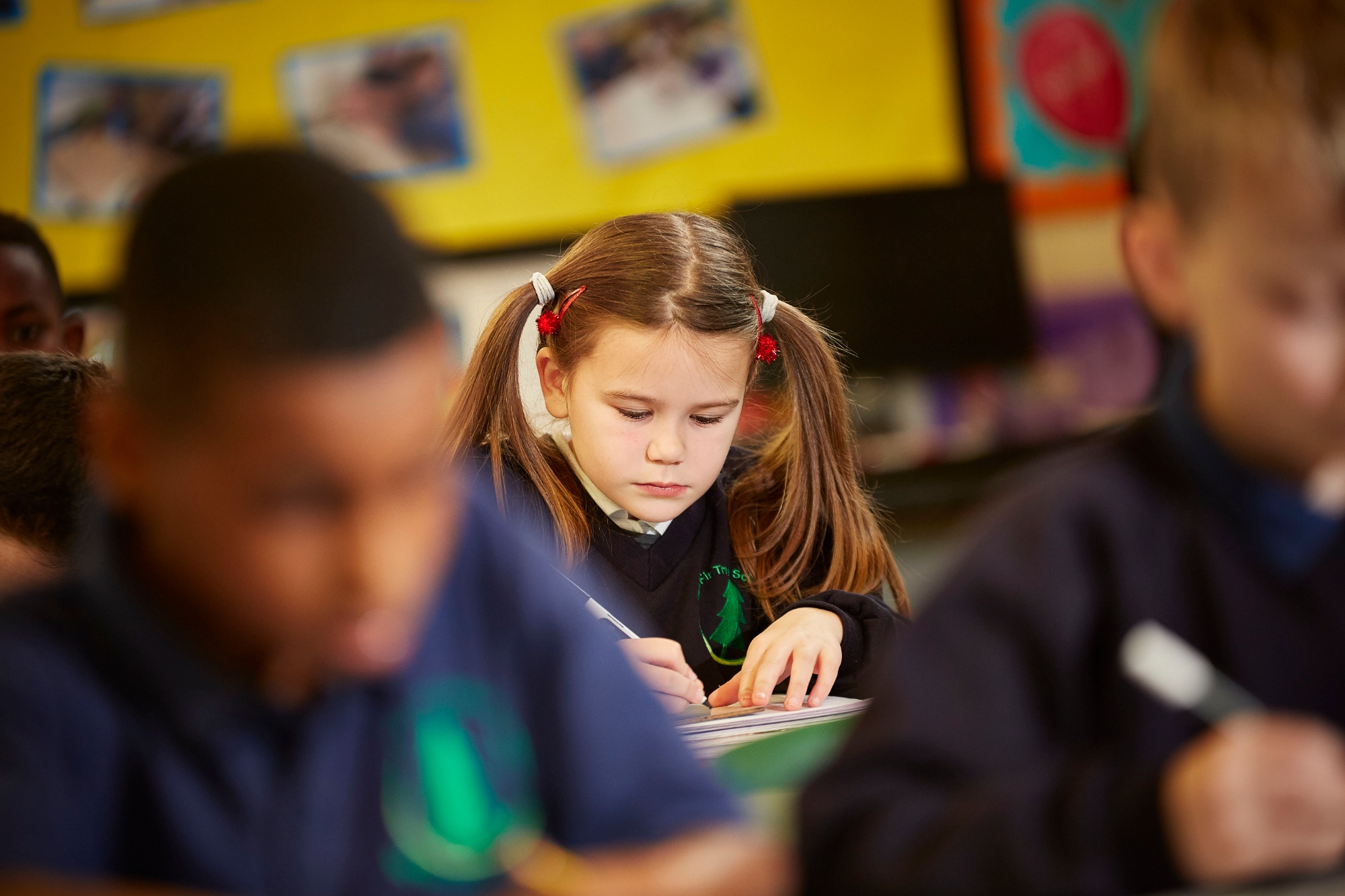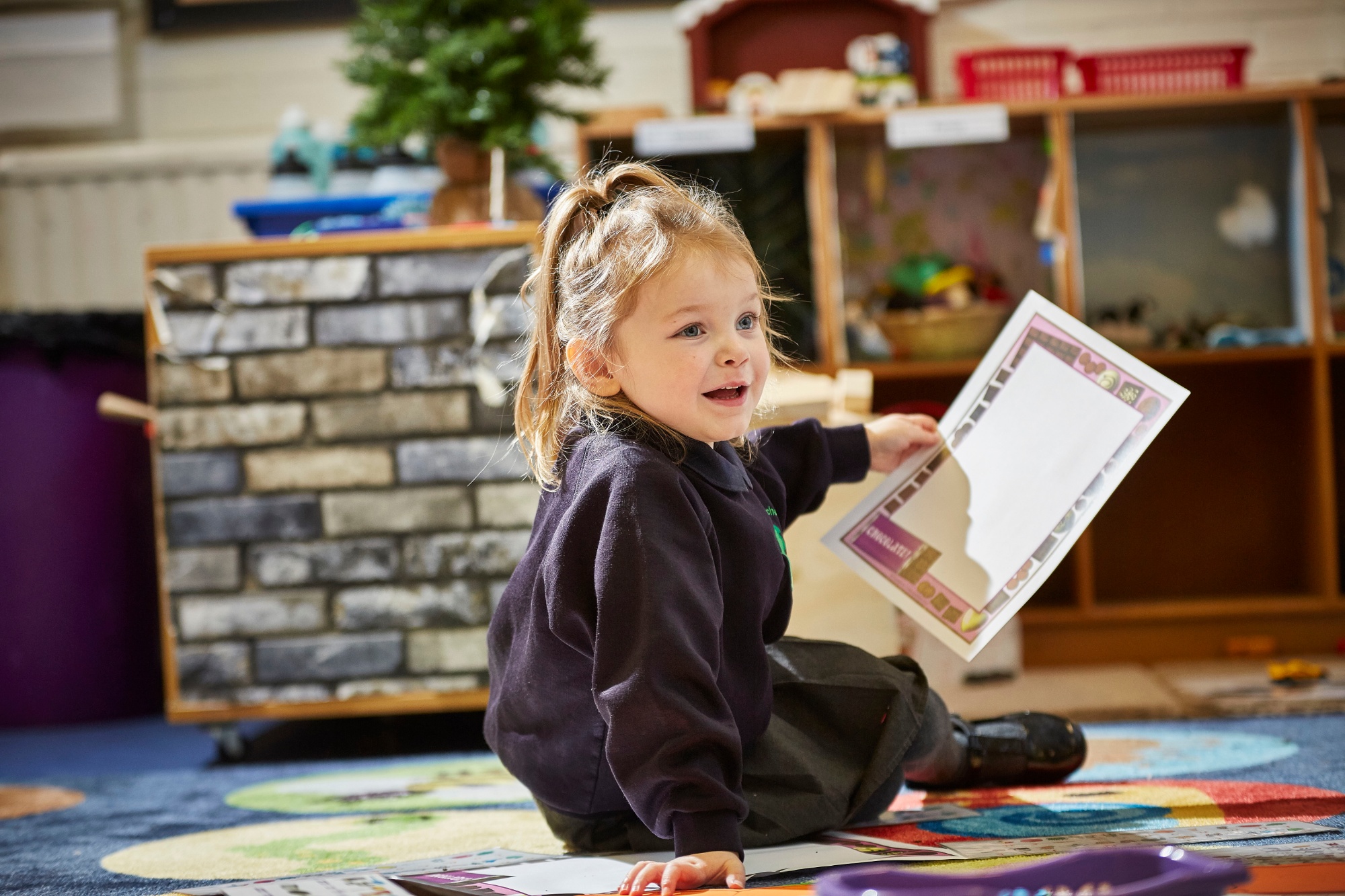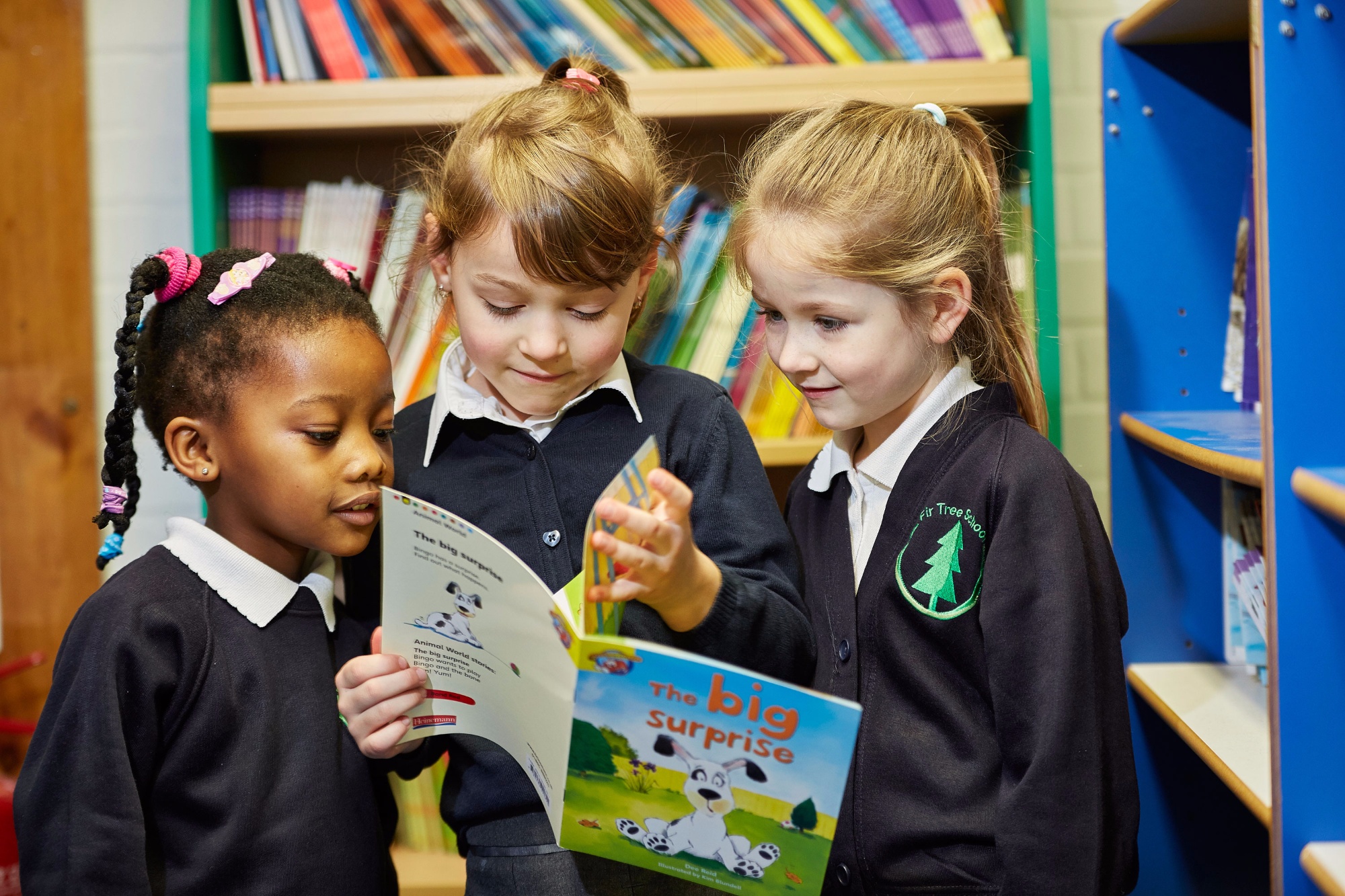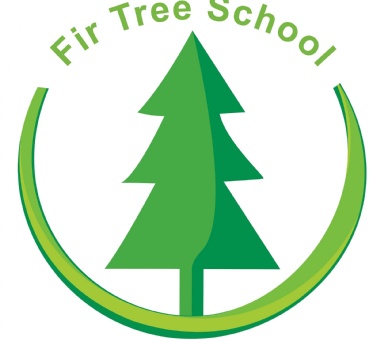Curriculum
Literacy
The art of storytelling is the first communication we experience on our journey through life. It has been the centre of human evolution and existence since the dawn of time. Our innate desire and ability to share this with others is central to our social development. This journey starts at birth and continues to develop throughout our lives. At Fir Tree, we pick up the torch ignited by a child’s loved ones and nurture the flame of enthusiasm. We build on the storytelling already experienced and foster the child’s desire to share and express knowledge.
Reading is not simply about decoding a series of words and phrases to find out information. It is the best way to learn and grow. It has been proven that reading can help develop your vocabulary, enhance your memory and improve your understanding of other people’s perspectives. At Fir Tree, we aim to foster the pleasure of reading; ensuring that we inspire future generations to read for its own sake as well as for other purposes. To provide the pupils with a rich and varied diet of opportunities which will develop their appreciation and thirst for knowledge. At Fir Tree, reading is taught through whole class, guided group work and our English curriculum. We use phonics-based banded books, an online levelled reading library (Rising Stars) and Accelerated Reader as well as books from a variety of schemes and quality texts.
In an increasingly technological world, we believe that teaching our pupils to understand the power of writing is vital. We must equip pupils with the skills, which enable them to effectively participate. We ensure that this happens by selecting quality texts which both inspire and motivate; providing an engaging stimulus and ‘WOW’ moments to stimulate vocabulary and promote meaningful opportunities to develop high quality skills in an environment which sets clear expectations in order to support and challenge developing minds.
The skills of writing are taught through our daily English lessons across a wide range of genres. Writing skills are carefully structured through a vocabulary centred approach (The Write Stuff) which draws upon each teacher’s skill of modelling excellent writing. This supports the pupils understanding of how a writer builds their language to create the desired effect. In addition to this, regular opportunities are given for the pupils to apply their skills in other areas of the curriculum. Where appropriate, pupils may also complete a Mystery Box Write; this can be anything from writing about an inspirational video clip to an interesting picture. This flexibility enables the pupils to tap into their preferred genre and style of writing and builds their individuality and independence while applying the skills and understanding learnt.
Punctuation and grammar are taught where possible through daily English lessons, but on occasions are taught discretely.
Handwriting and presentation are a focus throughout the school. Pupils are taught cursively from the Foundation Stage (where appropriate) and have regular handwriting activities throughout the week. In order to illuminate the importance of this, teachers celebrate good presentation with a weekly award.
Oracy is an important focus at Fir Tree. We want our pupils to leave us with strong communication skills, which allow them to clearly articulate and understand the world around them. We support all our pupils to develop good speaking and listening skills, which proliferates through every aspect of our curriculum and supports them as they GROW into effective articulate speakers.
Our Oracy curriculum ensures that each member of our community feels valued and that their contributions are listened to and considered with respect. Through whole-class interactive teaching, we ensure that there is a focus on pupils being able to verbalise and explain their understanding; support each other and challenge contributions with respect through discussion and shared experiences.
At Fir Tree, we believe that through Oracy, we learn to listen and respond with confidence, clarity and care. Providing all our pupils with the experiences, skills and knowledge to ensure that they succeed, not only in school but also beyond. Through the application of our GROW principles; we expect pupils to aspire to do well; achieve their goals while working with perseverance, determination and resilience to tackle difficult concepts along their learning journey.
Numeracy
At Fir Tree Primary School, we offer a mastery approach curriculum which aims to develop a deep and secure understanding. Therefore, all lessons provide opportunities for the children to develop their fluency, reasoning, and problem-solving skills. This approach to maths ensures that ALL children master and secure their maths learning and knowledge before moving on. Our children are taught through whole-class interactive teaching, where the focus is on ALL pupils working together on the same lesson content at the same time, giving ALL children the same opportunities to achieve. This ensures that all children can master concepts before moving to the next part of the curriculum sequence, allowing a long term deepening of understanding. Through our CPA approach (concrete, pictorial, abstract), children are encouraged to use manipulatives (hands on materials) to explain their understanding throughout the school and are taught to draw and write about their thinking in a variety of ways.
All children are challenged in lessons and are asked to reason in maths through use of STEM sentences to investigate and problem solve. For those children who grasp a concept quickly, teachers offer ways for children to extend and deepen their understanding through tasks that ensure they fully understand a concept. To support children who fail to grasp a concept or procedure, early intervention ensures that pupils are able to continue to move forward with the whole class. This support can be small group intervention with a teacher or TA or 1:1 support if needed.
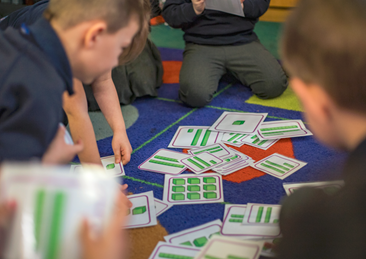
Pre times tables – maths passports
Here at Fir Tree we are excited to launch maths passports for our children in Foundation and Year 1. They will be used to improve children’s mental maths skills and develop their counting skills, which will lead onto learning their times tables in Key stage 2.
Each child will be given a passport with a series of targets. These targets will get progressively more challenging. The children will develop instant recall skills in all the objectives – they should not be taking time to work out the answer to each question, they need to know it instantly.
Children Foundation and Year 1 will be working their way around the British Isles
- Newbury
- England
- Scotland
- Wales
- Northern Ireland
- Ireland
- Isle of Man
A copy of the passport will be sent home so you know what objectives your child is working on. In school we will assess their targets periodically and when they have completed them, they will receive a certificate and the next passport. This maths passport will form the basis of the home learning you will do with your child.
We would ask that you spend 5 minutes each day practising your child’s passport skills with them. This could be walking to school, in the car, at teatime, before bed – it doesn’t need to be a sit down, formal time.
To help develop these skills you could try..
- Asking simple questions for example can you say one less than ..., what number comes next ....
- Counting objects for example front doors on the way to school.
- Counting with them, pausing to encourage them to think of the next number
Here at Fir Tree, to see their learning as a journey; to ask questions and persevere. We apply our GROW principles to the subject and ask children to aspire to do well, build resilience when tackling difficult concepts and to see the wonder in Maths that comes from immersing themselves in problems, sequences and patterns.
Times tables – Funkey Maths
Fir Tree School teaches times tables across Key Stage 1 and 2. We understand that learning times tables is often tricky, especially if children are taught to learn them by rote. Instead of that old-fashioned approach, we advocate a deeper way of learning and building up times tables facts - multiplication and division - by using a variety of approaches in class. Please see tabs below all about Funkey Maths and Times table rock stars.
Key Stage 1
In key stage 1, children continue to develop their mathematical knowledge and strategies. Developing number knowledge is hugely important, and pupils will focus on:
- Counting, reading, and writing numbers to 100 in numerals and words.
- Representing numbers in different ways.
- Understanding the place value of numbers to 100.
- Finding one more and one less.
- Identifying odd and even numbers.
- Comparing numbers using less than, greater than, and equal to symbols.
Children in key stage 1 will also learn about addition, subtraction, multiplication, and division, and will learn a variety of strategies to help them find answers. They will focus on:
- Adding and subtracting numbers using a wide range of strategies.
- Learning number bonds to 20.
- Understanding that addition can be done in any order and that there is a relationship between addition and subtraction facts.
- Counting in 2, 5, 10, and 3, working toward learning these times tables.
- Learning a range of strategies to solve multiplication and division.
- Recognising, finding, and naming ½, ¼, and ¾ of shapes, objects, lengths, and quantities.
It is also important that children in key stage 1 continue to develop their understanding of shape, space, and measure. They will focus on:
- Recognising and describing the properties of 2D and 3D shapes.
- Using mathematical vocabulary to describe position, direction, and movement, and describing, ordering, comparing, and measuring length, height, mass, and capacity.
- Recognising coins and using them to make amounts.
- Telling the time when it is o’clock, half past, quarter past, and quarter to.
- Using data to draw tally charts, block graphs, tables, and pictograms.
Key Stage 2
In key stage 2, children continue to build upon their learning from key stage 1. Number continues to be of high importance in key stage 2, as children focus on:
- Counting, reading, and writing numbers to 10,000,000 in numerals and words.
- Representing numbers in different ways.
- Understanding the place value of numbers to 10,000,000.
- Finding more and less of numbers.
- Comparing numbers using less than, greater than, and equal to symbols.
- Comparing fractions, decimals, and percentages and using them in relation to number.
- Solving problems involving finding ratios of numbers.
- Developing their knowledge of algebra and using it to solve problems.
Addition, subtraction, multiplication, and division continue to be a big focus in key stage 2. Children continue to learn a wide range of strategies to help them to find answers, using resources, pictorial representations, and by mentally calculating answers. They will focus on:
- Adding and subtracting numbers using a wide range of strategies.
- Learning a range of strategies to solve multiplication and division.
- Counting in multiples and learning times tables up to 12.
- Recognising, finding, and naming different fractions of shapes, objects, lengths, and quantities.
Shape, space, and measure continue to be a big area of focus in key stage 2. The children will focus on:
- Recognising and describing the properties of 2D and 3D shapes.
- Finding the length, perimeter, area, and volume of different shapes.
- Using reading, writing, and converting between standard units and measurements.
- Using mathematical vocabulary to describe position, direction, and movement.
- Describing, ordering, comparing, and measuring mass and capacity.
- Estimating, comparing, and calculating amounts using coins.
- Telling the time confidently.
- Using data to draw charts and graphs, and finding the mean, median, and mode of numbers.
Children in key stage 2 also focus largely on investigations and problem solving.
Times tables – Funkey Maths
Times tables – Funkey Maths
Funkey Maths cards are an additional resource that we suggest children use at home with parents. The cards are a great way to get to grips with all the number facts up to 12X12.
Times tables Rock star
Alongside Funkey Maths, there will be Times Table Rock Stars (an online, interactive programme). This is a fantastic resource for supporting your child learn all of the times tables. During years 2 - 6 children will be given their login details by their class teacher. This will enable them to use the app at home and improve their mental agility with all of the times tables.
All of the resources below are targeted worksheets that you can print off and use with your child.
Computing
Information Communication Technology at Fir Tree is well resourced. Each classroom has networked computers which allow all pupils controlled access to the internet, as well as a wide range of curriculum enhancing programmes such as TTRockstars and our praise service, Class Dojo, on our own school network. The school also benefits from an ICT suite; an iPad trolley, laptop trolley and interactive boards in all classrooms.
We are continually developing our curriculum and following the scheme Teach computing. This enables us to teach high-quality computing lessons to all ages, whilst preparing our children for technology jobs that haven’t even been invented yet and providing a foundation knowledge of algorithms and computing processes are key to achieving that goal.
In order to better cover the main five key aspects: Programming, e-safety, Multimedia, Handling data and Technology in our lives; these aspects are covered every term by every year group from Year 1 to Year 6.
Down in our foundation stage, the children are using barefoot curriculum to participate in cross curricular tasks which help to develop their computational thinking and approaches putting them in good stead for Year 1.
Online safety is a priority in our school; it is taught regularly and we are consistently monitoring and reviewing our practice. Making sure our children are always aware of how to keep themselves safe online, technology is always going to be a part of our children’s lives and we have to prepare them for that.
Not only is Online embedded in our computer curriculum, we also use Project Evolve to make sure you maximise our exposure to these topics. In addition to this, our children participate in online safety assemblies run by the computing lead on relevant topics.
Safeguarding
Technology is a significant component in many safeguarding issues. Child-on-Child abuse, including sexual abuse can take place online. Children and young people are also being targeted via online gaming channels to engage in extremist behaviour
Content: being exposed to illegal, inappropriate or harmful content, for example: pornography, fake news, racism, misogyny, self-harm, suicide, anti-Semitism, radicalisation and extremism.
Contact: being subjected to harmful online interaction with other users; for example: peer to peer pressure, commercial advertising and adults posing as children or young adults with the intention to groom or exploit them for sexual, criminal, financial or other purposes.
Conduct: personal online behaviour that increases the likelihood of, or causes, harm; for example, making, sending and receiving explicit images (e.g. consensual and non-consensual sharing of nudes and semi-nudes and/or pornography, sharing other explicit images and online bullying;
Commerce - risks such as online gambling, inappropriate advertising, phishing and or financial scams.
‘Patterning’: when someone is assaulted and the incident is then posted on as many different platforms and to as many people as possible to continue the humiliation and keep it coming back up
In order to make sure we keep our children safe at Fir Tree, we make sure all electronic devices are filtered and monitored by our IT department in the Trust and use rigorous security software.
Science
Learning about the amazing world around us should be fun! Our high-quality Science education provides the foundations for understanding the world around us. Science has changed our lives and is vital to the world’s future prosperity, and our pupils are taught essential aspects of the knowledge, methods, processes and uses of science. Through building up a body of key knowledge and concepts, pupils recognise the power of explanation whilst developing a sense of excitement and curiosity about the amazing world around them and how it works. Our children are encouraged to understand how science can be used to explain what is occurring, predict how things will behave, and analyse what has happened through first hand evidence and communicating their findings in exciting ways. Throughout the school we encourage children to apply their Maths, English and ICT skills in their science work and to make links between their scientific ideas in their everyday life experiences.
Scientist of the Month for May
Scientist of the Month for March
Scientist of the Month for January
Scientist of the Month for December:
DT
Pupils are taught to develop their design and technology capabilities through a combination of designing and making. Design and Technology (D&T) is about challenges, the exploration of ideas and seeing projects develop from start to finish Using their creativity and imagination, pupils design and make products that solve real and relevant problems within a variety of contexts, considering their own and others’ needs. They acquire a broad range of subject knowledge and draw on disciplines such as mathematics, science, engineering, computing and art. Pupils learn how to take risks, becoming resourceful, innovative, enterprising and capable citizens. Through the evaluation of past and present design and technology, they develop a critical understanding of its impact on daily life and the wider world. Food & Nutrition lessons are planned across the year with relevant links made to topic work
Through our relationships with other trust schools our children benefit from high level technology resources in purpose built workshops and kitchens.
PE
At Fir Tree, we believe that PE is a key part of the curriculum. Our approach to PE and Sport is one that aims to provide inclusion, challenge, and support to EVERY child. Throughout the academic year, our students study REAL PE; a holistic scheme of work dedicated to developing the whole child through Personal, Social, Cognitive, Creative, Health & Fitness, and Physical skills. Our PE is delivered by our full time sports coach & co-ordinator. As well as learning REAL PE, our children are also taught how to link their PE skills to a wide range of sports. We do this by ensuring that all of our children receive at least 2 hours PE per week, as well as extracurricular clubs. Key Stage 2 children at Fir Tree receive 10 weeks of swimming during each academic year, and all children also frequently take part in our “Golden Mile” running challenge.
We are members of the West Berkshire Sports Network (School Games Organiser), and Newbury District Primary Schools Football Association (NDPSFA). These organisations provide opportunity for our children to attend approximately 40-50 local competitions/events each academic year. There is an extensive range of sports and activities for our children to experience. These include Football, Athletics and Tag Rugby, to less conventional ones such as Boccia, Curling, Bowling and Archery. Our aim is to ensure that every child has represented the school in a sport before they finish KS2.
Art
- Looking at pupils’ work, especially over time as they gain skills and knowledge
- Observing how they perform in lessons
- Talking to them about what they know
History
- Using different sources — both primary and secondary — to understand the past and their relevance.
- Holding ‘Share and learn history days’ which provide children with hands-on experiences and a link to what is being taught.
- Visiting museums or historic houses.
- Through reading fiction, non-fiction, and picture books
- Looking at artefacts
- Share and learn days: Horrible History day (exploring Stuarts, Scots, etc..), Black history month, remembrance week (focus on WW1)
Geography
At Fir Tree Primary, we believe that Geography is ‘everything’. Our curriculum inspired pupils curiosity and fascination about the world around us. The children are encouraged to explore and answer questions about the natural and human worlds, locally, nationally and across the world. Different societies and cultures are explored and are compared against our own country. This helps children realise how we rely on each other on a global scale. Children are encouraged to think about their place in the world, their values and their rights and responsibilities to other people and the environment and how this impacts upon the wider world. Geography involves lots of transferable skills, such as research, observation, measurement, recording and presentation. Because of this, it forms an important part of the curriculum, and is taught individually as well as being incorporated across other areas of the curriculum, such as English, Art, History.
Music
Music is an important part of life at Fir Tree School. An online, interactive music programme “Charanga” is used to deliver lessons where the children listen to, appraise, rehearse and perform a range of musical pieces. Berkshire Maestros supports the school and children have the opportunity, in some year groups, to learn a musical instrument. In addition to this, all children take part in a weekly singing assembly where the children are taught a variety of songs including traditional Christian worship songs.
Children across the school have the opportunity to take part in a choir and also take part in a yearly “World Beat” competition which celebrates music in different languages. There are additional opportunities to take part in performances to the rest of the school and in the wider community during annual performances organised by Trinity and Berkshire Maestros.
RE
The religious education curriculum taught at Fir Tree Primary School follows an enquiry based scheme. RE explores big questions about life, to find out what people believe and what difference this makes to how they live, so that pupils can make sense of religion, reflecting on their own ideas and ways of living. We aim to develop the children’s understanding of the major world faiths and a greater understanding of the world in which we live. Each enquiry starts from the children’s own life experiences using these as a bridge into the investigation of the religion being studied focussing on a key question to explore over each unit by developing the pupils understanding through three different strands: believing, living and expressing.
PSHE (Personal, social, health and economic education)
As children grow and develop, our PSHE curriculum is designed to enable children to thrive and talk about issues arising in their everyday lives e.g. drug awareness, relationships and life in Modern Britain. At Fir Tree Primary, we want our children to develop confidence and responsibility whilst developing good relationships and respecting the differences between people. We are proud to teach PSHE through the scheme Jigsaw. Jigsaw is a mindful and child-centred approach to PSHE. It is an original and comprehensive scheme of learning which integrates personal, social, health and economic education with emphasis on emotional literacy, mental health and SMSC. Jigsaw aims to help children know and value who they really are and how they relate to other people in this ever-changing world. Sex education will be taught throughout the year groups as part of the Jigsaw scheme. We have an active school council who represent the children across the school, enabling the children to develop a sense of democracy and British values.
Jigsaw RSE Content
The grid below shows specific SRE learning intentions for each year group in the ‘Changing Me’ Puzzle.
| Year Group | Piece Number and Name | Learning Intentions 'Pupils will be able too..' |
|---|---|---|
| 1 | Piece 4 - Boys’ and Girls’ Bodies | Identify the parts of the body that make boys different to girls and use the correct names for these: penis, testicles, vagina respect my body and understand which parts are private. |
| 2 | Piece 4 - Boys’ and Girls’ Bodies |
Recognise the physical differences between boys and girls, use the correct names for parts of the body (penis, testicles, vagina) and appreciate that some parts of my body are private. Tell you what I like/don’t like about being a boy/girl |
| 3 | Piece 1 - How Babies Grow |
Understand that in animals and humans lots of changes happen between conception and growing up, and that usually it is the female who has the baby. Express how I feel when I see babies or baby animals |
| Piece 2 - Babies |
Understand how babies grow and develop in the mother’s uterus and understand what a baby needs to live and grow. Express how I might feel if I had a new baby in my family |
|
| Piece 3 - Outside Body Changes |
Understand that boys’ and girls’ bodies need to change so that when they grow up their bodies can make babies. Identify how boys’ and girls’ bodies change on the outside during this growing up process. Recognise how I feel about these changes happening to me and know how to cope with those feelings. |
|
| Piece 4 - Inside Body Changes |
Identify how boys’ and girls’ bodies change on the inside during the growing up process and why these changes are necessary so that their bodies can make babies when they grow up. Recognise how I feel about these changes happening to me and how to cope with these feeling. |
|
| 4 | Piece 2 - Having A Baby |
Correctly label the internal and external parts of male and female bodies that are necessary for making a baby. Understand that having a baby is a personal choice and express how I feel about having children when I am an adult. |
| Piece 3 - Girls and Puberty |
Describe how a girl’s body changes in order for her to be able to have babies when she is an adult, and that menstruation (having periods) is a natural part of this. Know that I have strategies to help me cope with the physical and emotional changes I will experience during puberty |
|
| 5 | Piece 2 - Puberty for Girls |
Explain how a girl’s body changes during puberty and understand the importance of looking after myself physically and emotionally. Understand that puberty is a natural process that happens to everybody and that it will be OK for me |
| Piece 3 - Puberty for Boys and Girls |
Describe how boys’ and girls’ bodies change during puberty. Express how I feel about the changes that will happen to me during puberty. |
|
| Piece 4 - Conception |
Understand that sexual intercourse can lead to conception and that is how babies are usually made. Understand that sometimes people need IVF to help them have a baby. Appreciate how amazing it is that human bodies can reproduce in these ways. |
|
| 6 | Piece 2 - Puberty |
Explain how girls’ and boys’ bodies change during puberty and understand the importance of looking after myself physically and emotionally. Express how I feel about the changes that will happen to me during puberty. |
| Piece 3 Girl - Talk/Boy Talk |
Ask the questions I need answered about changes during puberty. Reflect on how I feel about asking the questions and about the answers I receive. |
|
| Piece 4 Babies – Conception to Birth |
Describe how a baby develops from conception through the nine months of pregnancy, and how it is born. Recognise how I feel when I reflect on the development and birth of a baby. |
|
| Piece 5 - Attraction |
Understand how being physically attracted to someone changes the nature of the relationship. Express how I feel about the growing independence of becoming a teenager and am confident that I can cope with this. |
Phonics at Fir Tree
The Phonics Curriculum at Fir Tree
What is phonics?
Phonics is recommended as the basis from which all children should be taught to read. It recognises that all words are constructed with small units of sound called phonemes and teaches these, to enable children to learn how to read and spell. At Fir Tree, it runs alongside Guided and Shared Reading to help children develop all the vital reading skills and foster a love of reading.
What makes phonics tricky?
As we are all aware, teaching children to read is tricky; teaching phonics is just teaching children to crack the alphabetic code. In the English language, this is not simply 26 phonemes for 26 graphemes. The English language is a bit more complicated. This is largely because England has been invaded many times throughout history. Each set of invaders brought new words and new sounds with them. As a result, English only has around 44 phonemes but there are around 120 graphemes or ways of writing down! Another problem is that some graphemes can represent more than one phoneme. For example, ‘ch’ makes very different sounds in the following: chip, school, chef.
At Fir Tree, we have chosen to follow the Rocket Phonics SSP (Systematic, Synthetic Phonics) programme which, has full validation from the DfE.
What is Rocket Phonics?
Rocket Phonics, is a fully resourced systematic, synthetic phonics programme to teach children to read and write. It has a full range of Digital, and printed resources including fully phonetically decodable reading books. We chose this scheme due to four key features:
- Children are progressed at steady pace. The programme introduces two letter-sound correspondences each week with a variety of activities to stretch and challenge, but with only two per week, it allows all to keep up. The table below compares Letters and Sounds phonemic progression with Rocket Phonics
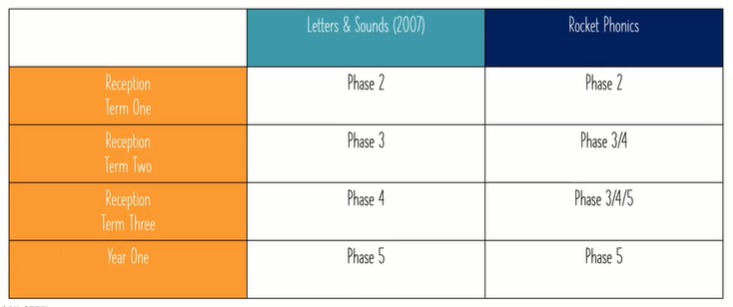
- Mapped out structure – complete planning for each lesson both weekly and daily ensures that even if the class teacher is not able to teach the lesson, alternative members of the team are able to pick up the planning to ensure that the children’s progression is not hindered
- Straightforward clarity – precise and detailed planning ensures that we are clear about skills and knowledge being taught. The consistent weekly structure ensures a clear focus each day so that the pace is maintained
- Engaging aesthetics –resources have been designed to ensure they are clear and uncluttered and consistently presented to support the structure and progression
Stage One: Tuning in
This stage is a fundamental building block for early reading skills to develop. Without a security in this, children do not have the foundations to base their new phonemic knowledge on. It is the cornerstone of our Nursery’s phonics curriculum, which then filters up through the year groups. The aim of this stage is to provide children with key skills in order to differentiate between and tune into sound. There are four main aspects:
- Sound discrimination: environmental, instrumental and body percussion
- Rhythm and rhyme
- Voice sounds
- Segmenting and blending
While at this stage of their education, our staff ensure that your child has a balanced diet of each aspect ensuring that when they move into Reception, they are ready to begin their more formal access to the Rocket Phonics program at Fir Tree.
Stage Two: Rocket Phonics Program
Rocket Phonics is taught primarily in our Reception and Key Stage One (year one and two) classes. It is a fully resourced digital and printed program desired to teach our children to read and spell. It is not dis-similar to the Letters and Sounds scheme taught previously however, Rocket Phonics is taught at a slower pace to ensure that the children fully understand the alphabetic code (phonemes/letter sounds) which they are learning to use.
Rocket Phonics Progression – Reception Year
Autumn Term
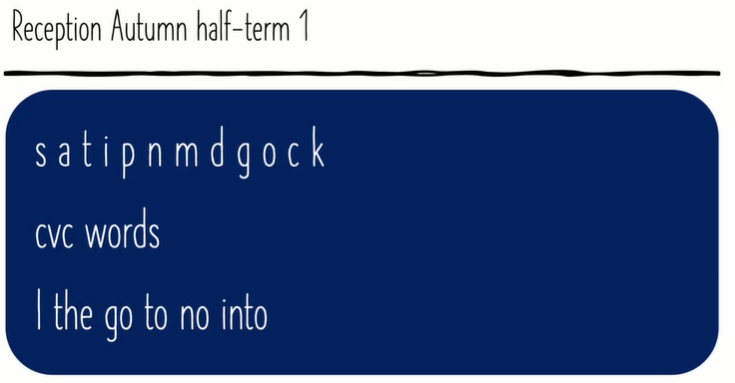
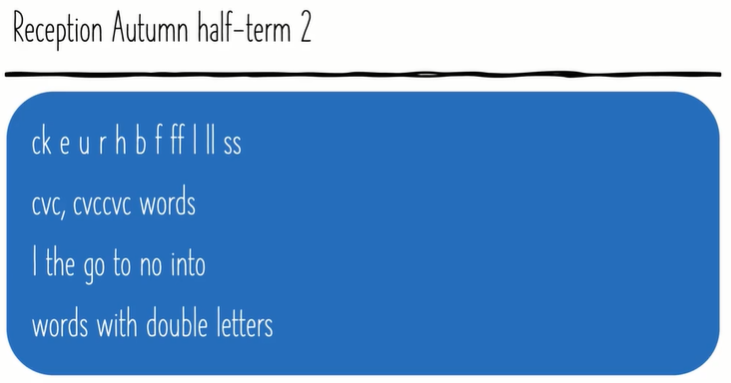
Spring Term
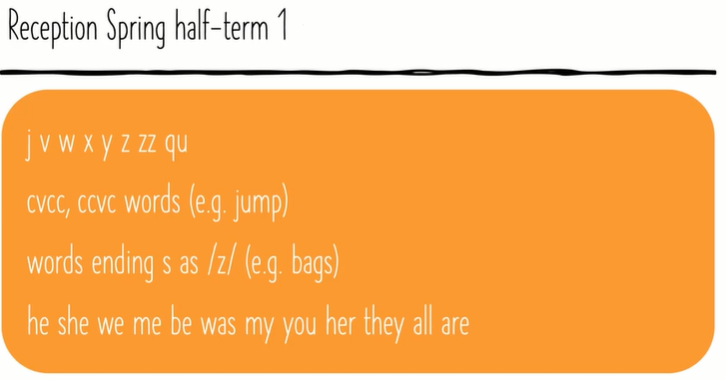
Summer Term
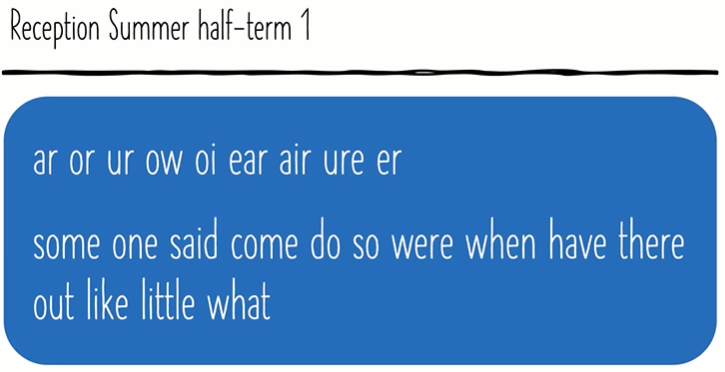
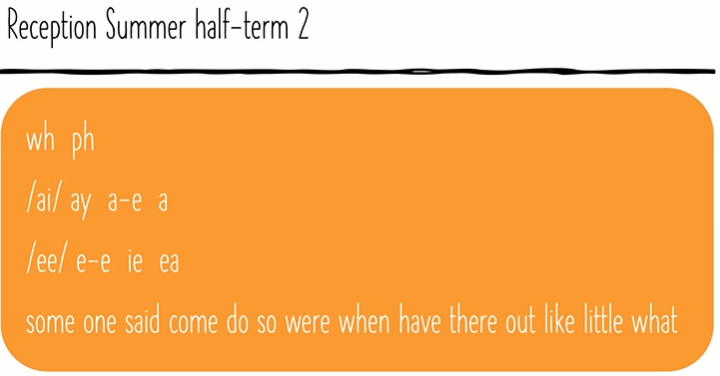
Rocket Phonics Progression – Year One
Autumn Term
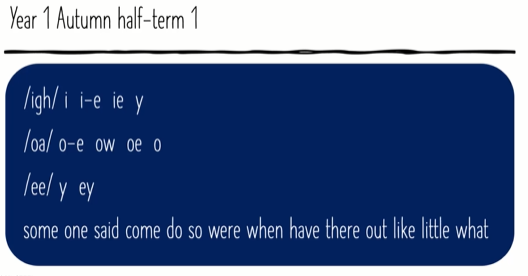
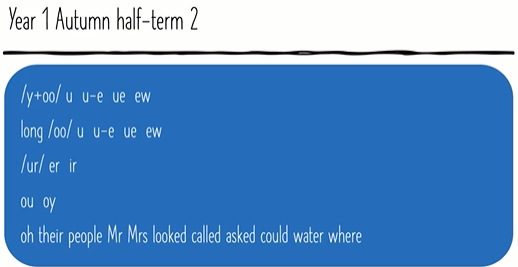
Spring Term
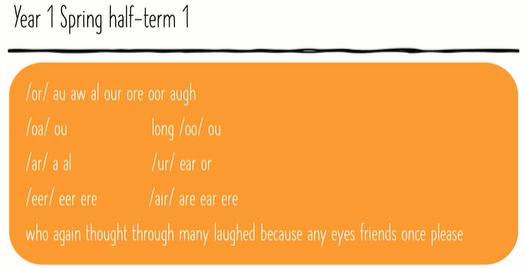
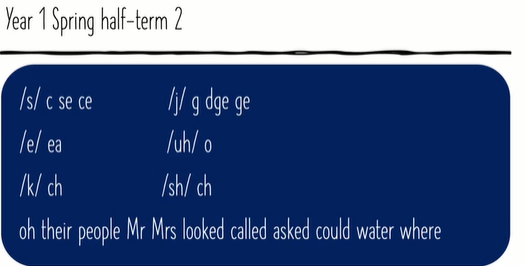
Summer Term
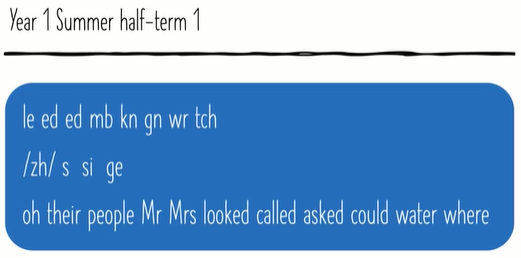
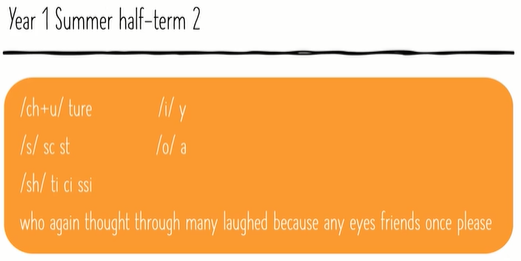
The national expectation for early reading, is that children are only given reading books which they are able to decode phonetically using the code they have been taught. As the Rocket Phonics program moves at a slower pace, it is expected, that when children are allocated a reading book, it will be a lower colour band than previously accessed. The reason for this is to ensure that when a child reads their allocated book, they have the necessary knowledge and skills to do so without guessing or requiring excessive adult support. The premise is that the child’s success breeds enthusiasm and desire to improve and therefore develop a love of reading.
What do all these different words mean?
There are many technical terms, which are used in phonics. It can sometimes seem that teachers, teaching assistants and even pupils are talking in a different language, leaving parents and carers bewildered and confused. Below is an explanation of the most commonly used phonics terminology:
Blending: Children are taught to be able to blend. This is when children say the sounds that make up a word and are able to merge the sounds together until they can hear what the word is. This skill is vital in learning to read.
Segmenting: Children are also taught to segment. This is the opposite of blending. Children are able to say a word and then break it up into the phonemes that make it up. This skill is vital in being able to spell words.
GPCs: This stands for grapheme phoneme correspondences. Children are taught GPCs which simply means that they are taught all the phonemes in the English language and ways of writing them down in a particular order.
Adjacent consonants: Two (or three) letters making two (or three) sounds. Example: the first three letters of strap are adjacent consonants also known as a consonant cluster.
Blending : The process of using phonics for reading. Children identify and blend the phonemes in order to hear and say a whole word. Also known as decoding or synthesising. Examples: s-n-a-p, blended together, reads snap.
Code: The English Alphabetic Code is the correlation between the sounds of speech and the individual letters or groups of letters used to represent those sounds in print. A ‘piece of code’ refers to a letter-sound correspondence or grapheme-phoneme correspondence.
Common Exception Words (CEW): A high frequency word with an unusual letter-sound correspondence, e.g. one, their, because. These words are taught by decoding the familiar part and pointing out the unusual part.
Consonant digraph: Two consonants which make one sound. Examples: sh, ch, th, ph
CVC, CCVCC etc.: These represent the consonant and vowel sounds in word structures. For example, a CVC word = h-e-n, b-oa-t or ch-i-p.
Digraph: Two letters which together make one sound. There are different types of digraph – vowel, consonant and split. For example, ai, ea, mb
Grapheme: A letter or group of letters representing one sound (phoneme). Examples: ck, igh, t, sh
Phoneme: The smallest unit of sound in a word. Represented in print using slash marks /a/
Quadgraph: Four letters which together represent one sound, e.g. eigh, ough
Schwa: An unstressed syllable. It is common for people to pronounce various graphemes as an /uh/ sound in natural speech.
Segmenting: The process of using phonics for spelling and writing. Children listen to the whole word and break it down into constituent phonemes, choosing the corresponding grapheme to represent each phoneme. For example, ‘lunch’ can be segmented as l-u-n-ch. Also known as encoding.
Split digraph: Two letters, which work as a pair to make one sound, but are separated within the word. Examples: a-e as in make or late; i-e as in size or write.
Trigraph: Three letters which together make one sound. Examples: dge, igh
Vowel digraph: A digraph in which at least one of the letters is a vowel Examples: ea, ay, ai, ar
Useful websites
https://home.oxfordowl.co.uk/phonics-videos/
http://www.phonicsplay.co.uk/index.htm
https://www.bbc.co.uk/programmes/b007t298
https://www.ictgames.com/mobilePage/literacy.html
How can I find out more?
We are always more than happy to help.
If you have any queries, or you would like to find out more, please contact the class teacher via the class pages. Alternatively, you can direct your query to office@firtree.newburyacademytrust.org and we will put you in contact with the relevant member of staff.
Year 1 Curriculum Map
Year 2 Curriculum Map
Year 3 Curriculum Map
Year 4 Curriculum Map
Year 5 Curriculum Map
Year 6 Curriculum Map
Whole School Curriculum Map
More Information
Parents/carers and members of the public can find out more about the curriculum at Fir Tree by contacting the school office on office@firtree.newburyacademytrust.org.

